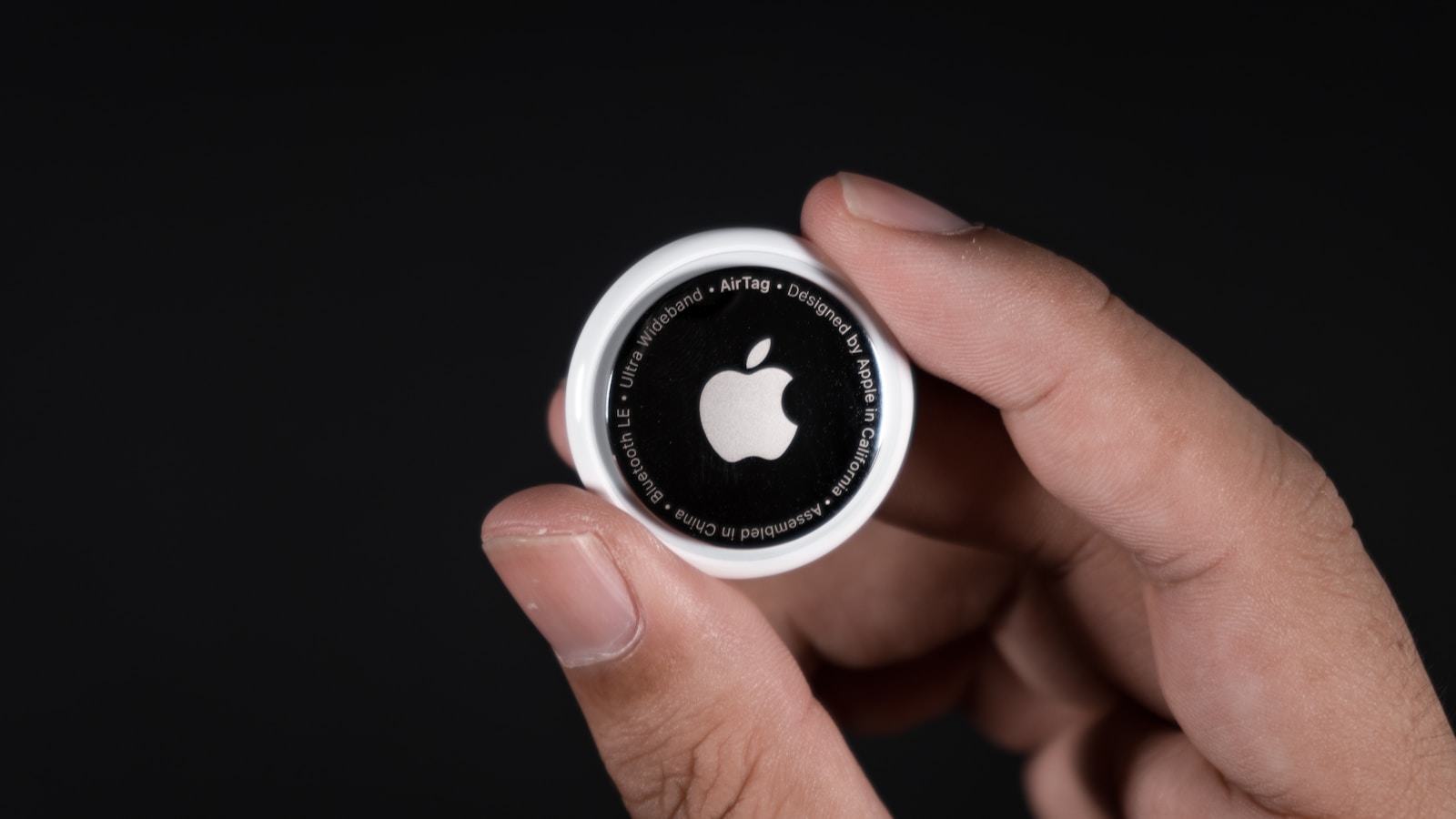Exciting developments are on the horizon for Apple fans, as the tech giant is expected to unveil the second-generation AirTag in 2025. This new version promises enhanced tracking capabilities and will feature an upgraded chip while maintaining the familiar design of its predecessor.
The AirTag 2 aims to build on the success of the original item tracker. In addition to a recognizable design, it will include significant improvements such as enhanced tracking accuracy and range, a more powerful chip, and better anti-stalking measures. These upgrades are expected to provide users with a more reliable and secure tracking experience.
Whether you’re a current AirTag user or considering your first purchase, the AirTag 2 is shaping up to be a valuable addition to Apple’s ecosystem.
AirTag 2: What We Know About Apple’s Upcoming Tracker
Apple is reportedly planning to release the AirTag 2 in 2025. While the design is expected to remain similar to the original, there are some notable upgrades on the horizon. These include enhanced tracking accuracy, a more powerful chip, and improved anti-stalking measures.
Enhanced Tracking
The AirTag 2 is rumored to have improved tracking accuracy and range. This likely involves a new U1 chip with enhanced Ultra-Wideband technology. This means you’ll be able to pinpoint your lost items with greater precision, even if they’re further away.
Upgraded Chip
A new and more powerful chip is expected to power the AirTag 2. This could lead to faster processing and potentially new features that weren’t possible with the original AirTag. Apple might introduce functionalities like more precise location tracking or even integration with other Apple devices and services.
Anti-Stalking Measures
Apple is reportedly putting a strong emphasis on improving anti-stalking measures in the AirTag 2. This is in response to concerns about AirTags being misused for unwanted tracking. The new measures could include louder alerts, more proactive notifications, and potentially even technology that makes it harder to use AirTags for malicious purposes.
Familiar Design
Despite the internal upgrades, the AirTag 2 is expected to retain a design similar to the original. This means a small, circular shape that can be easily attached to keys, wallets, bags, and other valuables. The familiar design ensures compatibility with existing AirTag accessories.
What to Expect
- Improved Accuracy: Finding your lost items will be easier and more precise.
- New Features: The upgraded chip could enable new functionalities and integrations.
- Enhanced Security: Stronger anti-stalking measures will provide greater peace of mind.
- Seamless Integration: The AirTag 2 will likely work seamlessly with the Find My app and other Apple devices.
AirTag vs. AirTag 2 (Expected)
| Feature | AirTag | AirTag 2 |
|---|---|---|
| Tracking Accuracy | Good | Improved |
| Range | Limited | Increased |
| Chip | U1 | Upgraded U1 |
| Anti-Stalking | Basic | Enhanced |
| Design | Circular | Similar to AirTag |
| Price | $29 | Likely similar |
Should You Wait for the AirTag 2?
If you’re considering buying an AirTag, it might be worth waiting for the AirTag 2, especially if you value improved accuracy and enhanced security features. However, if you need a tracker now, the original AirTag is still a reliable option.
The Expanding Apple Ecosystem
Apple continues to expand its ecosystem of devices and services. The AirTag 2 is another example of how Apple is integrating its products to create a more seamless and connected user experience. This interconnectedness allows for greater convenience and functionality for Apple users.
Short Summary:
- The second-gen AirTag is anticipated to launch in mid-2025.
- Upgraded features include enhanced tracking and a new Ultra Wideband chip.
- Potential integration with Apple’s Vision Pro headset may revolutionize how users interact with their belongings.
In the world of technology, anticipation often fuels excitement, and Apple is pushing the envelope with news of the forthcoming AirTag 2. Launched in April 2021, the original AirTag has remained unchanged for three and a half years, but an upgraded version is now in the works, promising improvements in functionality and integration.
According to Mark Gurman from Bloomberg, several new products are lined up for introduction in the first half of 2025, which includes the AirTag 2. In his weekly Power On newsletter, Gurman outlined a series of launches set for that period:
“I expect Apple to kick off 2025 with several other new devices in the first half of the year:”
- 13-inch and 15-inch MacBook Air models featuring the M4 chip (J613 and J615).
- A revamped iPhone SE (V59).
- Refreshed 11-inch and 13-inch iPad Air models (J607 and J637).
- New Magic Keyboards for updated iPad Airs (R307 and R308).
- An upgraded AirTag item tracker (B589).
The anticipated release has faced some delays; on October 2023, Ming-Chi Kuo, a trusted analyst in Apple’s supply chain, reported that the mass production of the second-generation AirTag would be postponed from late 2024 to an unspecified date in 2025. While details regarding this delay remain sparse, it indicates that Apple’s roadmap for the AirTag 2 is evolving.
The Features We Expect
With each new iteration of Apple products, users expect a leap in technology, and the AirTag 2 appears to be no different. Gurman has previously hinted that the upcoming AirTag will include a newly developed chip aimed at improving location-tracking capabilities. This chip will likely mirror the second-generation Ultra Wideband chip that debuted within the iPhone 15 lineup last year, enhancing the Precision Finding feature.
Additionally, there are whispers about potential integration with Apple’s Vision Pro headset, a groundbreaking device intended to immerse users in a spatial computing environment. According to Kuo, this integration may provide novel functionalities for users, allowing the AirTag 2 to effectively send positional information to the Vision Pro, thus creating an augmented reality experience that combines both digital and physical realms.
Design and Usability
While the aesthetics of the AirTag are expected to remain largely unchanged, the design’s practicality could see updates. Users have expressed concerns regarding the ease of accessing the CR2032 battery, which some have criticized as being hazardous for young children. Thus, it’s possible that Apple may reconsider the method by which users are able to change the battery.
Despite the anticipation of new features, it is notable that there is no indication that Apple plans to transition to a rechargeable battery format, which means users can expect the familiar replaceable battery system to continue with the AirTag 2.
Competitive Landscape
As Apple prepares for the launch, it faces mounting competition in the item-tracking sector. Notably, Samsung has made waves with its recently launched Galaxy SmartTag2, boasting an impressive battery life of up to 700 days and a compact design that enhances usability. In addition, Google is rumored to be developing its own tracking device, which many believe is dependent on Apple’s iOS updates that will allow for unknown tracker alerts.
With these competitive offerings emerging, Apple must step up its game to maintain a firm foothold in this burgeoning market. As it stands, Apple’s iOS 17 updates have finally introduced features allowing iPhone users to get alerts for third-party trackers, including the ever-controversial AirTag, a move that underscores the importance of user security while navigating this technology.
Spatial Computing and the Future
Apple’s vision for a more immersive user experience is closely linked to its strategy of developing a spatial computing ecosystem, with the AirTag 2 playing a key role. As the Vision Pro is set to launch in 2024, the AirTag 2 may not only function as a tracking device but also act as a beacon, providing a level of interactivity and precision that could transform the way users manage their belongings in both physical and digital environments.
The concept of seamlessly integrating tracking devices with augmented and virtual reality experiences opens up new possibilities for user interaction. The potential applications are extensive, and as more information becomes available, the AirTag 2 could redefine the landscape of personal item tracking.
Looking ahead, the excitement surrounding the release of the AirTag 2 in 2025 highlights Apple’s dedication to remaining at the cutting edge of technological innovation. With improved tracking capabilities, an upgraded chip, and enhanced integration with the Vision Pro, the functionality and user experience are set to be significantly enhanced.
For dedicated Apple fans and potential customers alike, the coming year is poised to be of great interest as further details about this next-generation device emerge. As the market for tracking devices becomes increasingly competitive, it will be intriguing to see how Apple chooses to respond. Given their strong track record of success and innovation, all eyes will be on Cupertino to observe the developments.







